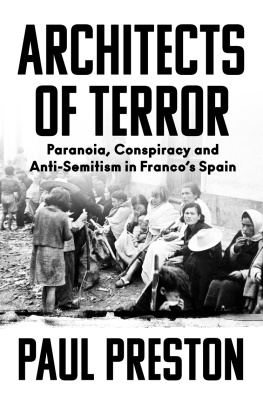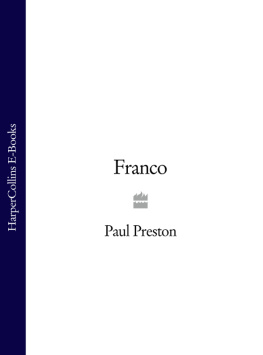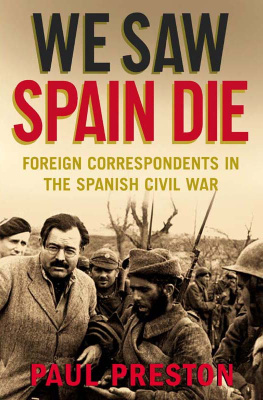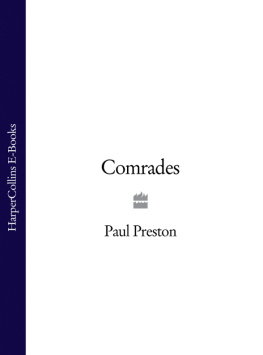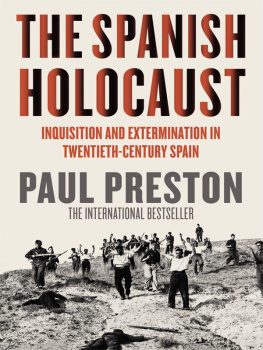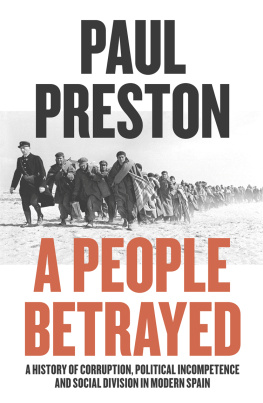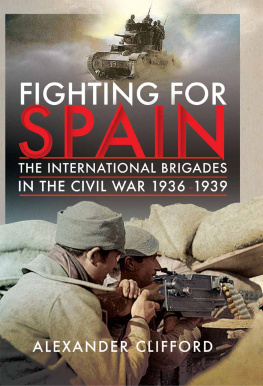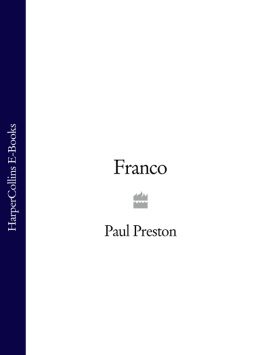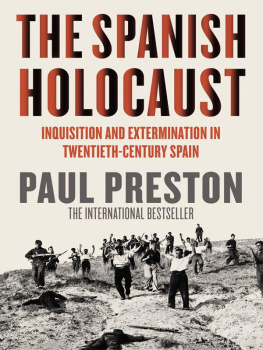Paul Preston - Architects of Terror: Paranoia, Conspiracy and Anti-Semitism in Franco’s Spain
Here you can read online Paul Preston - Architects of Terror: Paranoia, Conspiracy and Anti-Semitism in Franco’s Spain full text of the book (entire story) in english for free. Download pdf and epub, get meaning, cover and reviews about this ebook. City: London, year: 2023, publisher: William Collins, genre: History. Description of the work, (preface) as well as reviews are available. Best literature library LitArk.com created for fans of good reading and offers a wide selection of genres:
Romance novel
Science fiction
Adventure
Detective
Science
History
Home and family
Prose
Art
Politics
Computer
Non-fiction
Religion
Business
Children
Humor
Choose a favorite category and find really read worthwhile books. Enjoy immersion in the world of imagination, feel the emotions of the characters or learn something new for yourself, make an fascinating discovery.
- Book:Architects of Terror: Paranoia, Conspiracy and Anti-Semitism in Franco’s Spain
- Author:
- Publisher:William Collins
- Genre:
- Year:2023
- City:London
- Rating:5 / 5
- Favourites:Add to favourites
- Your mark:
Architects of Terror: Paranoia, Conspiracy and Anti-Semitism in Franco’s Spain: summary, description and annotation
We offer to read an annotation, description, summary or preface (depends on what the author of the book "Architects of Terror: Paranoia, Conspiracy and Anti-Semitism in Franco’s Spain" wrote himself). If you haven't found the necessary information about the book — write in the comments, we will try to find it.
From the preeminent historian of 20th century Spain Paul Preston, Architects of Terror is a new history of how paranoia, conspiracy and anti-Semitism was used to justify the military coup of 1936 and enabled the construction of a dictatorship built on violence and persecution.
It is the previously untold story of how antisemitic beliefs were weaponised to justify and propagate the Franco overthrow of liberal Spain.
The Spanish military coup of 1936 was launched to overturn the social and economic reforms of the democratic Second Republic, and its educational and cultural challenges to the established order. The consequent civil war was fought in the interests of the landowners, industrialists, bankers, clerics and army officers whose privileges were threatened. However, a central justification for a war that took the lives of around 500,000 Spaniards was that it was being fought to combat an alleged scheme for world domination by a non-existent Jewish- Masonic-Bolshevik Conspiracy. Despite the fact that Spain had only a tiny minority of Jews and Freemasons, Franco and his inner circle were ardent believers in this fabricated conspiracy and spread the notion that the survival of Catholic Spain, as well, of course, of the establishment s economic interests, required the total annihilation of Jews and Freemasons.
Architects of Terror is the story of how fake news, mendacity, corruption and nostalgia for lost empire generated violence and hatred. The book presents vivid portraits of the key ideologues who propagated the myth of the Jewish-Masonic-Bolshevik Conspiracy and of the military figures who implemented the atrocities that it justified. Among the convictions shared by these individuals was their belief in the idea that Freemasonry was responsible for Spain s loss of empire and in the factual veracity of The Protocols of the Elders of Zion, the notorious fiction about the global domination of the Jews.
This is a history that reverberates in our own political moment
Paul Preston: author's other books
Who wrote Architects of Terror: Paranoia, Conspiracy and Anti-Semitism in Franco’s Spain? Find out the surname, the name of the author of the book and a list of all author's works by series.

